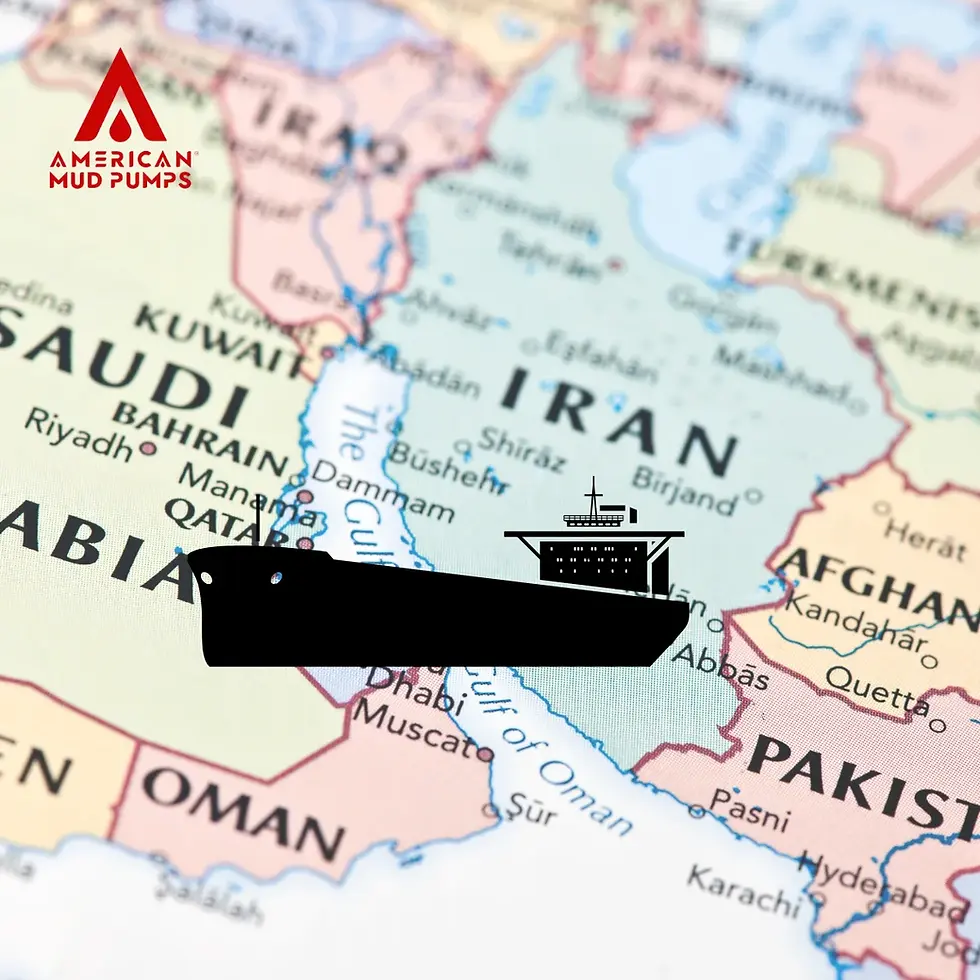From the Desert to the World: Gulf Oil’s Global Reach in 2024
- AMP

- Jun 17
- 2 min read
While the United States still imports some oil from the Persian Gulf, about 0.5 million barrels per day (b/d) in 2024, this amount has dropped sharply over the past decades.
The U.S. now leans more on its own production and Canadian imports, reshaping trade patterns that once relied heavily on the Middle East.
Yet, in much of the world, especially Asia, the story is very different.
The countries surrounding the Persian Gulf, particularly Saudi Arabia, the United Arab Emirates (UAE), and Kuwait, remain central players in the global oil market.
These nations are not only major producers, but also among the world’s top exporters.
A significant share of their crude oil still flows through the Strait of Hormuz, a narrow but strategic passage between Iran and Oman that links the region to global markets.
In 2024, Saudi Arabia alone exported 5.5 million b/d of crude oil and condensate through Hormuz, 38% of all Gulf crude oil shipments, according to EIA.
The UAE and Kuwait also contributed large volumes. These flows are essential, not just in numbers, but in their global influence.
Who buys Gulf oil?
In 2024, about 84% of crude oil and 83% of LNG that passed through the Strait of Hormuz went to Asia.
The top buyers were China, India, Japan, and South Korea, which together absorbed 69% of Gulf crude exports.
As these countries continue to grow, their need for reliable energy keeps Middle Eastern producers at the core of global supply.
How does it get there?
Though tankers through Hormuz remain the primary route, producers have built alternate pathways to reduce risk.
Saudi Arabia operates the East-West Pipeline, which runs from oil fields near the Persian Gulf to Yanbu on the Red Sea.
It can carry up to 7 million b/d and was used more frequently in 2024 to avoid shipping disruptions.
The UAE also uses a pipeline from its inland fields to the Fujairah terminal on the Gulf of Oman.
This route bypasses Hormuz and, in 2024, helped the UAE boost exports of lighter crude grades while processing more heavy oil at home.
Iran, meanwhile, attempted to expand exports through the Goreh-Jask pipeline, but with limited success.
By late 2024, it was shipping under 70,000 b/d, and halted activity at those ports by September.
Regional demand is growing
One growing trend is the rise in refining capacity within the Gulf.
Countries like Saudi Arabia and the UAE are refining more of their own oil, not only for local use but also for export as finished products.
This shift means less raw crude is sent abroad, and more value is retained at home.
In the end, Gulf oil production remains highly relevant, not just in how much is produced, but in who it serves and how fast it reaches them.
Fast access to Asia and flexible export options continue to give the region a dominant role in global energy.











Comments